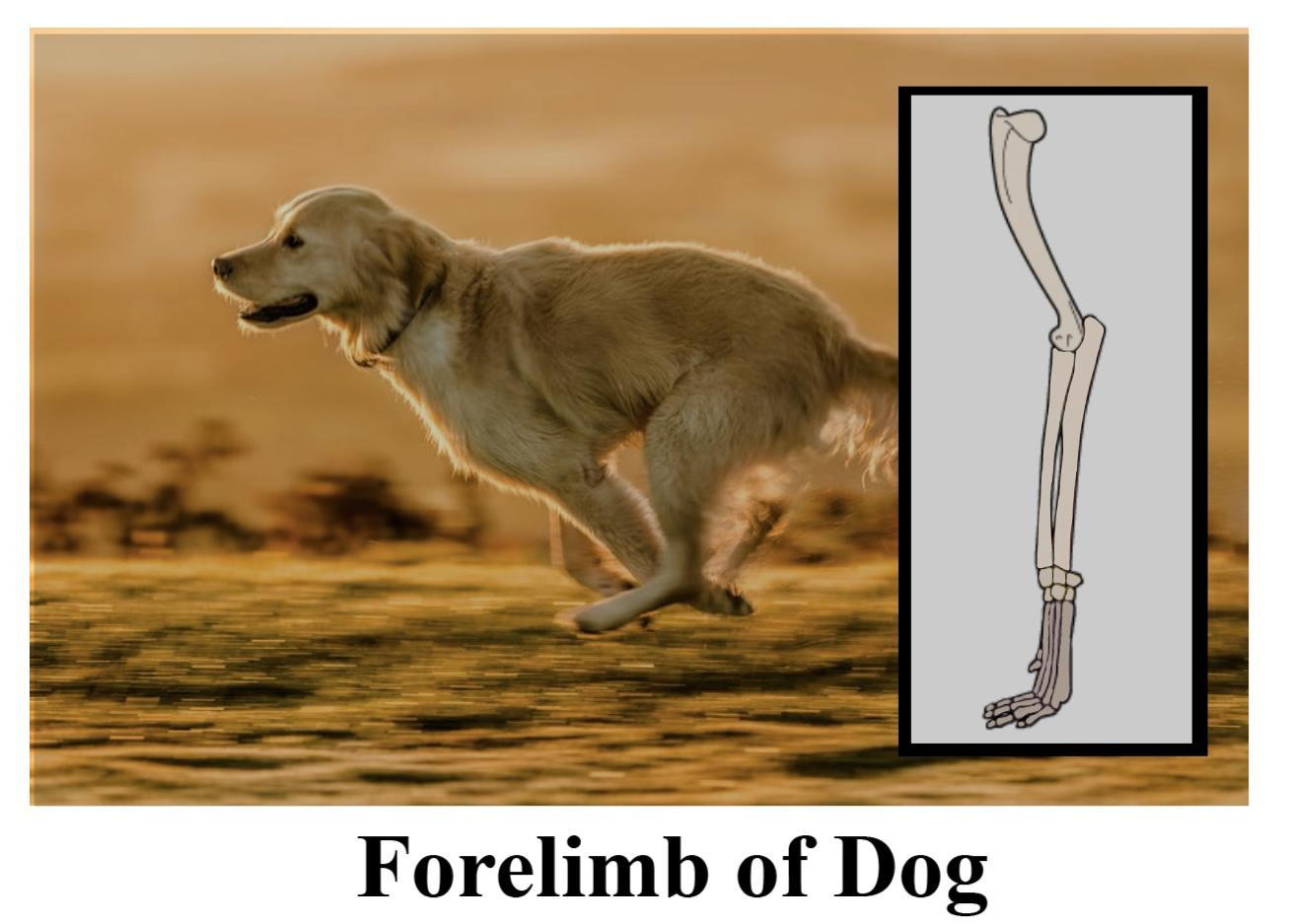
What function is performed by human arms, forelimbs of dog, and forelimbs of the whale?
Answer
498k+ views
Hint: The human's arms, forelimbs of dog, and forelimbs of whales come under the category of homologous organs. They have common ancestry but don’t perform the same functions. Organs evolved as there is an evolution of organisms.
Complete answer:
The human arm's role is to achieve items together with your hands. The dog's forelimb role is to assist with the motion. Whale forelimbs act like flippers and help the Whale to swim easily. Dog forelimbs, Human arms, and whales forelimbs are homologous organs.
Homologous structures are the organs or skeletal elements of animals and different organisms that, by considering similarity, suggest their connection to a common ancestor. These structures don't need to look precisely the same or have an equivalent function.
Other than the homologous structures or organs, analogous organs are also present. Analogy means the similarity of function and superficial resemblance of structures that have different origins. for instance, the wings of a fly, a moth, and a bird are analogous because they developed independently as adaptations to a standard function—flying. The presence of the analogous structure, during this case the wing, doesn't reflect evolutionary closeness among the organisms that possess it. Scientists usually identify analogous structures by watching the known relatives of the 2 species being studied. If a line of common inheritance are often found – like humans and monkeys both having fingers, once we have a fossil record showing that humans and monkeys shared a standard ancestor, who also had fingers – the structures aren't considered analogous.
Note: Homologous structures are also present in plants. Some common examples of plants that are homologous are the leaves of a pitcher plant, a Venus flytrap, a cactus, and a poinsettia are all examples of homology. They are known to be homologous structures because, although they have different shapes and different functions today, they all share a common ancestor.



Complete answer:
The human arm's role is to achieve items together with your hands. The dog's forelimb role is to assist with the motion. Whale forelimbs act like flippers and help the Whale to swim easily. Dog forelimbs, Human arms, and whales forelimbs are homologous organs.
Homologous structures are the organs or skeletal elements of animals and different organisms that, by considering similarity, suggest their connection to a common ancestor. These structures don't need to look precisely the same or have an equivalent function.
Other than the homologous structures or organs, analogous organs are also present. Analogy means the similarity of function and superficial resemblance of structures that have different origins. for instance, the wings of a fly, a moth, and a bird are analogous because they developed independently as adaptations to a standard function—flying. The presence of the analogous structure, during this case the wing, doesn't reflect evolutionary closeness among the organisms that possess it. Scientists usually identify analogous structures by watching the known relatives of the 2 species being studied. If a line of common inheritance are often found – like humans and monkeys both having fingers, once we have a fossil record showing that humans and monkeys shared a standard ancestor, who also had fingers – the structures aren't considered analogous.
Note: Homologous structures are also present in plants. Some common examples of plants that are homologous are the leaves of a pitcher plant, a Venus flytrap, a cactus, and a poinsettia are all examples of homology. They are known to be homologous structures because, although they have different shapes and different functions today, they all share a common ancestor.



Latest Vedantu courses for you
Grade 11 Science PCM | CBSE | SCHOOL | English
CBSE (2025-26)
School Full course for CBSE students
₹41,848 per year
Recently Updated Pages
Master Class 11 Business Studies: Engaging Questions & Answers for Success

Master Class 11 Economics: Engaging Questions & Answers for Success

Master Class 11 Accountancy: Engaging Questions & Answers for Success

Master Class 11 Computer Science: Engaging Questions & Answers for Success

Master Class 11 English: Engaging Questions & Answers for Success

Master Class 11 Maths: Engaging Questions & Answers for Success

Trending doubts
Which one is a true fish A Jellyfish B Starfish C Dogfish class 11 biology CBSE

Difference Between Prokaryotic Cells and Eukaryotic Cells

1 ton equals to A 100 kg B 1000 kg C 10 kg D 10000 class 11 physics CBSE

1 Quintal is equal to a 110 kg b 10 kg c 100kg d 1000 class 11 physics CBSE

One Metric ton is equal to kg A 10000 B 1000 C 100 class 11 physics CBSE

How much is 23 kg in pounds class 11 chemistry CBSE




